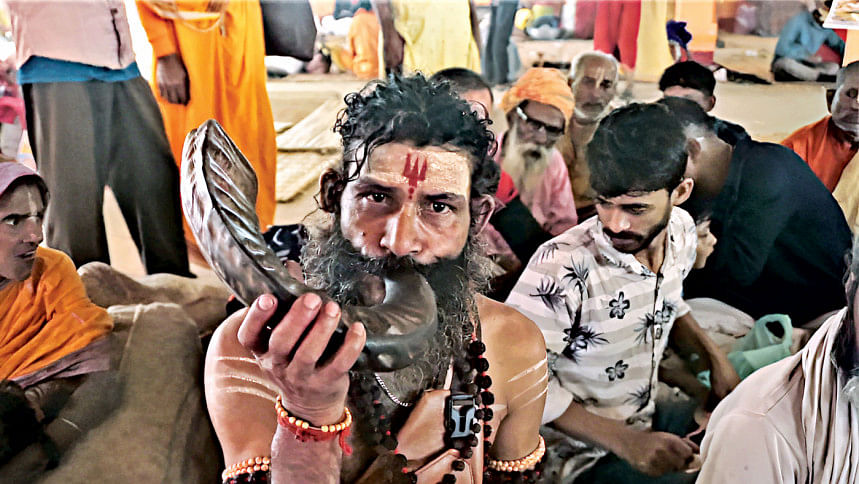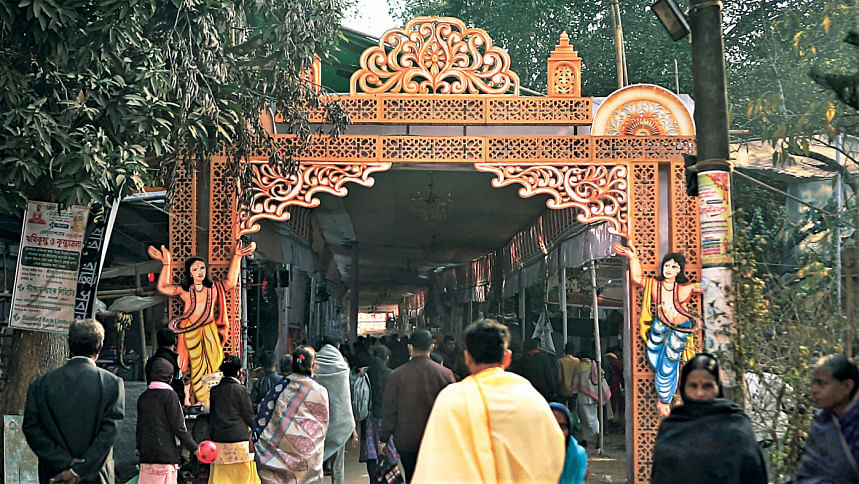A vibrant end to Kumbh Mela

The 11-day-long 21st International Rishikumbha and Kumbha Mela concluded with the initiation of Pandits yesterday.
Kumbh Mela, one of the largest religious gatherings in the world, takes place every 12 years in India. However, in Bangladesh, it is celebrated every three years in Chattogram's Banshkhali upazila.
The word "Kumbh", which translates to "pitcher", refers to a mythical pitcher that was used to collect the nectar of immortality during a great battle between the gods and the demons.
According to Hindu mythology, drops of nectar fell in four different locations, and it is at these places that the Kumbh Mela is held.
The festival lasted 11 days and involved a series of spiritual rituals and ceremonies, including bathing in the holy rivers, attending sermons by Hindu saints, and participating in mass prayers and offerings.

"This is the only Kumbh Mela in Bangladesh where we gather and celebrate every three years. The fair started on January 27," said Harihor Dey, one of the organisers.
"This is the only Kumbh Mela in Bangladesh where we gather and celebrate every three years. The fair started on January 27," said Harihor Dey, one of the organisers.
In addition to the religious aspects of the festival, the Kumbh Mela is also a vibrant cultural event, featuring performances by musicians, artists, and dancers, as well as a bustling market where vendors sell food, souvenirs, and other goods.
The Kumbh Mela is also a symbol of unity and a celebration of cultural diversity. Despite the massive crowd, the festival is known for its peaceful and harmonious atmosphere.
"The event was a success, with everyone leaving with a sense of fulfilment. I have been attending this fair since my childhood and it is gradually changing and becoming more colourful," said visitor Amrita Harinam Das.

 For all latest news, follow The Daily Star's Google News channel.
For all latest news, follow The Daily Star's Google News channel. 



Comments